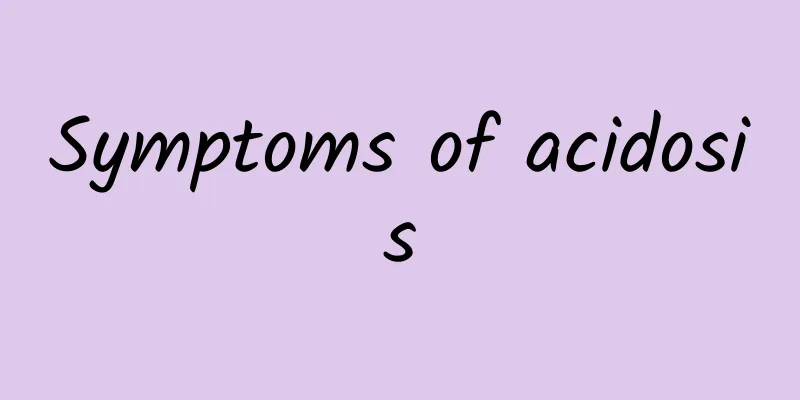What is the disease of hair loss?

|
Losing all your hair is generally considered a symptom of alopecia areata. When it comes to a person's appearance, hair occupies a relatively important position. If a person has less hair or is bald, his or her image will be greatly reduced. This will also be a great disadvantage in social situations. Over time, it will even affect a person's mental health and cause him or her to develop an inferiority complex. Below we will introduce you to the relevant knowledge about alopecia areata in detail! 1. Causes The cause is unknown. There is lymphocyte infiltration around the hair follicles, and the disease is sometimes combined with other autoimmune diseases (such as vitiligo and atopic dermatitis). Therefore, it is currently believed that the occurrence of this disease may have an autoimmune pathogenesis. Genetic predisposition is also an important factor, which may be related to HLA type II. 25% of cases have a family history. In addition, it may also be related to neurotrauma, mental disorders, infectious lesions and endocrine disorders. 2. Differential Diagnosis It needs to be differentiated from tinea capitis, cicatricial alopecia, traction alopecia, syphilitic alopecia, and androgenic alopecia, etc. 1. Ringworm Incomplete hair removal, most of the hair is broken, and the remaining hair roots are difficult to pull out and are attached with scales. Mold can be easily found in broken hair. It is more common in children. 2. Syphilitic alopecia Although it also presents as patchy baldness, the hair does not form scars, but the edges are irregular and appear to be worm-eaten. The hair loss in the hair loss area is not complete, the hair loss is large, and it tends to occur on the back. Accompanied by other symptoms of syphilis and positive syphilis serological test. 3. Pseudo-alopecia areata The scalp on the affected area is atrophied, smooth and shiny, the openings of the hair follicles are not visible, and there is no thick hair loss at the edge of the patch. Treatment Most common alopecia areata tend to heal naturally, but a few cases recur, making them difficult to treat. But there are many treatments that can be combined to treat hair loss. 1. Topical medication (1) Minoxidil 5% minoxidil cream or solvent, applied once or twice a day, may be related to its vasodilatory effect. (2) Anthralin 0.5% to 1% anthralin ointment or cream is a primary irritant. Apply externally 1 to several times daily, until mild dermatitis occurs on the local skin. (3) Diphenylcyclopropene (DCP) is the most commonly used contact sensitizer. (4) Glucocorticoids: powerful hormones for external use or intravenous administration. Topical application of 0.05% dexamethasone and 50% dimethyl sulfoxide solution often has better therapeutic effects than creams. 2. Internal medication (1) Glucocorticoids: Prednisone is taken orally, and the dosage is gradually reduced after a few weeks, and then maintained at a low dose for 6 months. Glucocorticoids are effective, but have significant side effects and are prone to relapse after discontinuation of the drug, so they are not used as a routine treatment. However, it can be tried for acute alopecia areata to prevent it from developing into total alopecia or universalis. (2) Cyclosporine: The course of treatment is 6 to 12 months. It is effective in some cases, but the drug should be discontinued if there is no effect after 4 months. (3) Thymopentin: intramuscular injection for 3 weeks. (4) Vasodilator: Oral niacin. 3. Local injection Local injections of glucocorticoids are suitable for smaller areas of hair loss or for cosmetically important areas (such as eyebrows) in patients with alopecia universalis. The injection can be directly into the hair loss area or into its surrounding area in order to control the further expansion of the hair loss area. Care should be taken to avoid possible local skin atrophy and depression. 4. Neuroblocking therapy The greater occipital nerve is blocked. After the nerve is blocked, the skin temperature in the area it innervates rises, which is beneficial to hair regeneration. |
<<: What to do if the hair on the top of the head is too close
>>: What to do if your hair is too sticky after straightening
Recommend
Is it okay to drink Sumu soaked water for a long time?
Chinese medicinal materials such as Su Mu can usu...
Serious causes of hair loss in women
Hair loss in women is quite common in daily life,...
Causes of otitis externa
Otitis externa is a disease caused by infection o...
Pneumonia Chinese medicine
The lungs are a dominant organ in the respiratory...
What are the signs of autism?
Autism is actually a serious mental illness. Espe...
Complete list of oral medications for hemorrhoids
In fact, for many people, hemorrhoids are not a d...
What to do if you have a sprained neck? Methods to relieve sprains
In our daily life, if we have a bad sleeping post...
How to cure hemorrhoids quickly
Hemorrhoids are the most common perianal disease....
What symptoms require curettage?
Curettage is a method of abortion. It can be used...
Chest tightness feels like something is blocking it
Many people feel chest tightness from time to tim...
What are the dangers of tooth extraction during menstruation?
During menstruation, women's physical constit...
What are the effects and functions of Millettia reticulata
.Cranberry, I don’t know if you are familiar with...
Hair dryer treatment of cervical spondylosis
Cervical spondylosis is a very common disease now...
Exercises for lumbar disc herniation
It does not mean that patients with lumbar disc h...
How long after getting the vaccination can you take a shower? Taking a shower too early can easily cause a cold.
The baby's immunity is very low, so some vacc...









